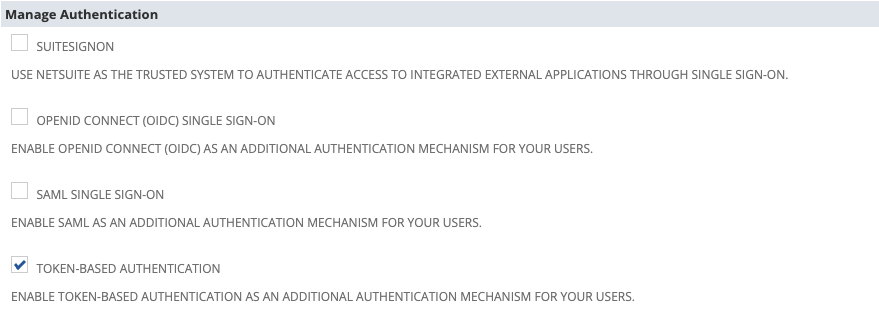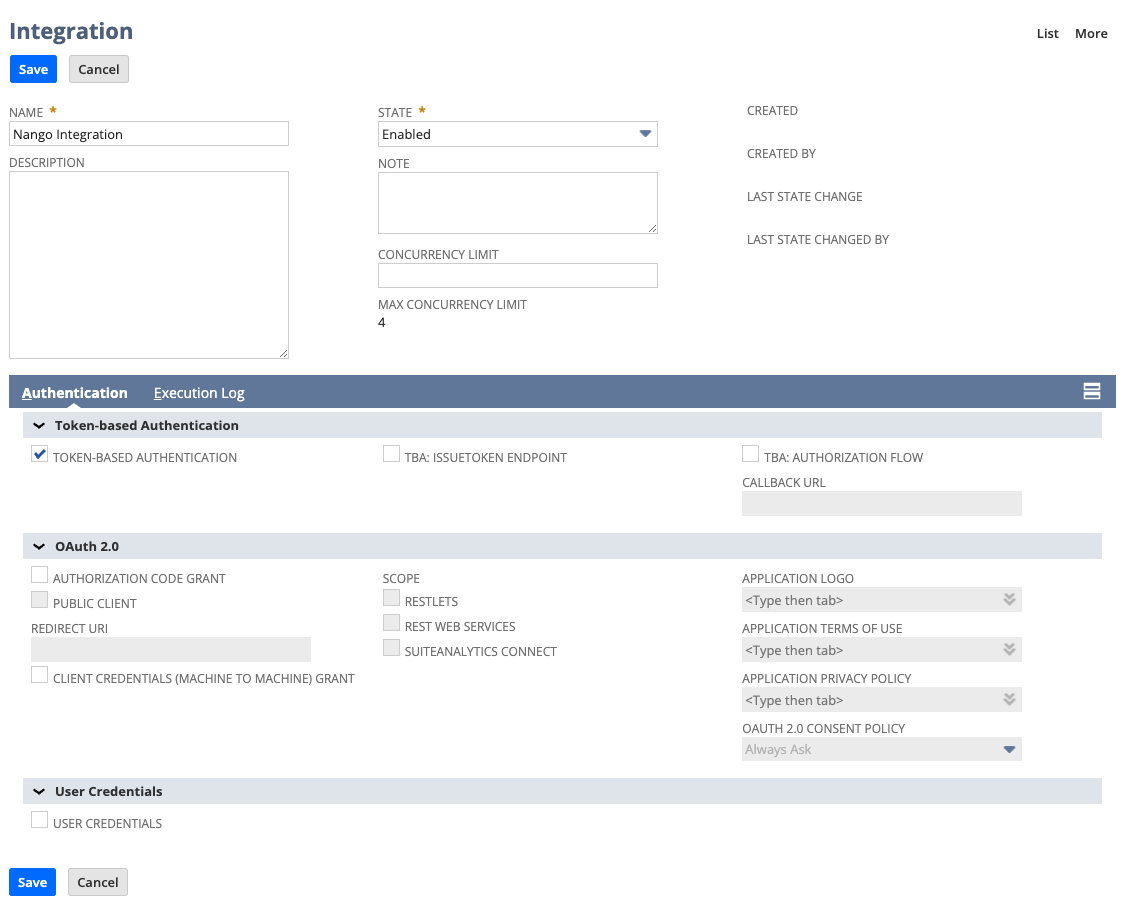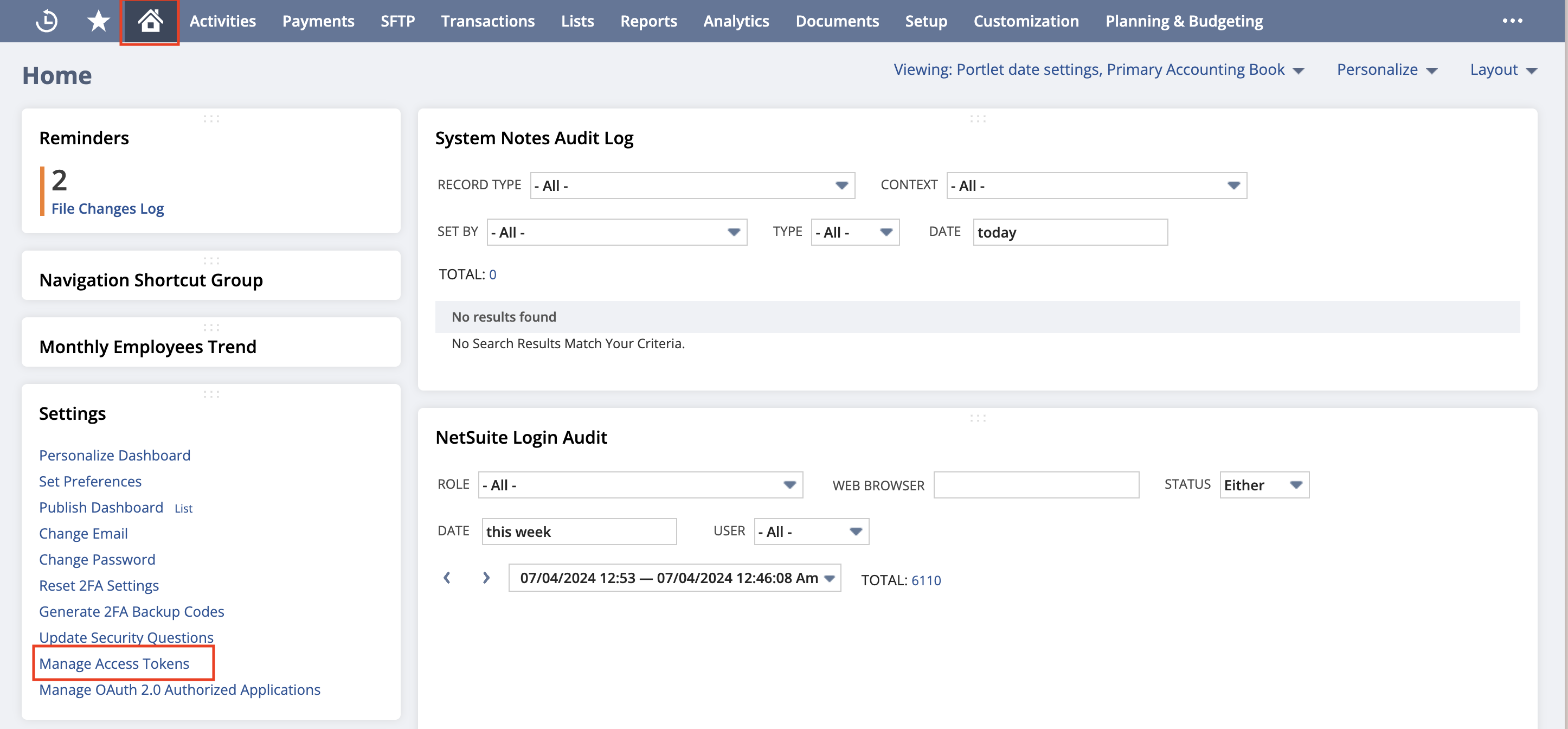Creating a Netsuite account typically requires scheduling a call with their sales team. If you don’t have an account yet, visit Netsuite’s website to get started.
Admin Setup for Token-Based Authentication
If you have admin privileges in your Netsuite account, follow these steps to enable TBA and create the necessary credentials.Enable Required Features
1
Navigate to feature settings
Log in to your Netsuite account and navigate to Setup > Company > Enable Features.
2
Enable SuiteTalk web services
Under the “SuiteTalk” header, check both:
- SOAP WEB SERVICES
- REST WEB SERVICES

3
Enable token-based authentication
Under the “Manage Authentication” header, check:
- TOKEN-BASED AUTHENTICATION

Create an Integration Application
1
Create new integration
Navigate to Setup > Integration > Manage Integrations > New.
2
Configure integration settings
Set the desired name for this integration.Enable TOKEN-BASED AUTHENTICATION and disable both:
- TBA: AUTHORIZATION FLOW
- AUTHORIZATION CODE GRANT

3
Copy client credentials
The client credentials will now be displayed. Copy and securely store:
- Consumer Key (also called Client ID)
- Consumer Secret (also called Client Secret)
Generate Access Tokens
1
Navigate to access tokens
Return to the homepage by clicking the home icon. At the bottom left corner, click the Manage Access Tokens button.

2
Create a new token
- Select the Application Name you created for this integration
- Enter a “Token Name”
- Save your new access token
3
Copy token credentials
The token credentials will now be displayed. Copy and securely store:
- Token ID
- Token Secret
Configure Nango
1
Create integration in Nango
In Nango, create a new integration using the
netsuite-tba provider and leave the “Client Id” and “Client Secret” values empty.2
Create connection with credentials
Create a new connection and provide the following values:
- OAuth Client Id Override: Paste the Client ID (Consumer Key) from Netsuite
- OAuth Client Secret: Paste the Client Secret (Consumer Secret) from Netsuite
- Token ID: Paste the Token ID from the access token step
- Token Secret: Paste the Token Secret from the access token step
- Account ID: Your Netsuite account ID (found in your Netsuite URL instance)
Non-Admin Role Setup
When setting up Netsuite TBA with a non-admin role, additional configuration is required. This section covers the necessary permissions and setup steps for non-administrator users.Required Role Permissions
The role must have the following permissions enabled under Setup > Users/Roles > Manage Roles > [Your Role] > Permissions: Under “Setup”:- SOAP Web Services permission
- REST Web Services permission
- Token-Based Authentication permission
- OAuth 2.0 permission (recommended for future flexibility)
Creating Access Tokens with Specific Roles
To create an access token for a non-admin role:- Switch to the desired role using the role selector in the top-right corner
- Navigate to Setup > Integration > Manage Access Tokens
- Click “New Access Token”
- Select your application from the dropdown
- Provide a token name
- Save and securely store the Token ID and Token Secret that are displayed
The role selection at token creation time determines the permissions available to that token. Make sure you’re using the correct role before creating the token.
Required Permissions for Token Management
Users who will be creating integrations and tokens need these additional permissions: Under “Setup”:- Access Token Management permission
- Integration Application permission
- Manage Integration permission
Concurrent Web Services User
If you need to make concurrent API calls:- Navigate to Setup > Company > Enable Features > SuiteCloud tab
- Enable “CONCURRENT USERS FOR WEB SERVICES”
- For each user that needs this capability:
- Go to Setup > Users/Roles > Manage Users
- Edit the user
- Check “Web Services User”
- Check “Concurrent Web Services User”
Troubleshooting Non-Admin Access
If you encounter authentication issues:-
Permission Verification:
- Log out and log back in after permission changes
- Verify permissions are saved by checking the role again
- Ensure all parent permissions are also enabled (some permissions have dependencies)
-
Role Configuration:
- Confirm the user is assigned the correct role
- Verify the role has all required permissions listed above
- Check if the role has access to the necessary records and features